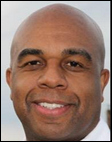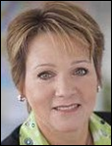The Key to Population Health Management: The Convergence of Data, Technology, and Social Determinants of Health
By Matt Miller, PhD

Matt Miller, PhD is vice president of behavior science at StayWell of Yardley, PA.
Advances in technology are having a significant impact on the healthcare individuals receive. Patient DNA is used to personalize treatments with precision medicine. Artificial intelligence (AI) and machine learning are speeding diagnosis and helping providers determine the best courses of action. The Internet of Things (IoT) is enabling a wide range of remote clinical applications, from medication adherence to monitoring vital functions including glucose, heart rate, and blood pressure to configuring and gathering real-time data from medical devices such as pacemakers and defibrillators.
While these technologies are powerful on their own, the combination of these various patient-specific data streams can produce an exponential impact on improving patient outcomes when merged with behavioral and environmental insights. Integration of this diverse data, through electronic health records (EHRs) and other critical healthcare systems, will play an important role in creating an ecosystem that enables providers and patients to get the information they need, when they need it. In turn, this integration of data will support the larger goals of improving population health.
Modern healthcare is well positioned to reap the rewards of recent advances in technology. Silicon and graphene at the chip level and microelectromechanical systems (MEMS) in semiconductors are in devices used every day for diagnoses and treatment, such as CT scanners, X-ray machines, magnetic imaging, ultrasound, and for monitoring blood pressure, glucose levels, and other vital statistics. These components play critical roles in sensing, data processing, and controlling machines used to monitor and treat patients. Add data science – AI and machine learning – to the mix and the industry can begin to explore new frontiers in healthcare by expanding our ability to detect and interpret patterns.
We are beginning to see this convergence of new technologies emerge in targeted use cases. Computer vision and convolutional neural networks are helping radiologists identify malignant tumors, minimizing the pain, inconvenience, and cost of biopsies. Pharmacogenomics and precision medicine are enabling researchers to identify first-line medications for patients based on their genomes and develop therapeutics based on the unique characteristics of the individual and his or her disease.
These applications are just the beginning of innovations that will redefine healthcare in the 21st century. But there may be a simpler example of how today’s data capture technology can make an equally significant impact in improving population health. This approach involves integrating behavioral, environmental, and social data directly into physician’s workflows, so healthcare professionals can have a more robust understanding of a patient’s risk factors and take proactive steps to help patients remain, or become more, healthy.
Social determinants of health (SDOH) are macro-level factors responsible for influencing health risks and health outcomes. SDOH include economic stability, neighborhood and physical environment, level of education, access to healthy food and quality healthcare, available support systems, and stress. These factors contribute to an individual’s life expectancy, mortality, healthcare expenditures, health status, and functional limitations, according to the Henry J. Kaiser Family Foundation.
Research demonstrates the enormous influence of behavior and SDOH on patient outcomes. Clinical interventions impact only 10 to 20 percent of a person’s health outcomes, while socioeconomic and environmental factors determine 80 to 90 percent, according to The National Academy of Medicine.
Consider the possibilities if a physician had access to social and behavioral information alongside lab tests, imaging results, and other background information about the patient. Not only could the doctor see that his 50-year old female patient’s glucose is high and creatinine and hemoglobin are slightly off, he could also evaluate the impact of her adherence to taking prescription medicine, stress level, and the fact that she lives in an urban food desert and doesn’t have access to regular care.
These types of solutions are already coming to fruition, in a variety of forms and functionality. Consider the offering developed by Proteus Digital Health, which combines ingestible sensors, a small wearable sensor patch, and mobile application to monitor patient health patterns and medication adherence behaviors. The objective information collected by the Proteus system enables doctors to initiate, adjust and measure treatment effectiveness, saving patients and payers money while optimizing care and amplifying outcomes.
Johns Hopkins University School of Medicine was also recently awarded a grant to continue research of the Emocha mHealth app, which tracks medication details and care management for individuals with tuberculosis, a diagnosis where strict medication adherence is essential for positive outcomes. The app connects patients and providers for Directly Observed Therapy (DOT), in which patients record themselves taking prescribed medication. The video is uploaded to a telehealth portal, where providers can confirm the medication was taken correctly and collaborate with patients on care management. Early results show that Emocha app boosted medication adherence rates by 94 percent and saved almost $1,400 per patient in treatment costs.
Using multiple data points to triangulate a patient’s condition enables physicians to deliver healthcare with a more holistic perspective. Understanding the gravitational force SDOH has on health outcomes, physicians not only can address the symptoms of disease, but can also respond to variables known to cause and/or exacerbate illness. With these types of insights, they can make more informed decisions around diagnosis, treatment and the continuum of care.
It can be a challenge for physicians to get insights into social and behavioral factors. But the move to EHRs, plus greater integration and effective data exchange through standardization efforts like Fast Healthcare Interoperability Resources (FHIR), are beginning to make these promises a reality. By capturing more data points through EHRs and having access to complete records regardless of where healthcare services are delivered, physicians will have a more comprehensive picture of patients’ background and health, empowering them to provide the care and resources to meet the unique needs of each patient.
Several device manufacturers are already offering remote monitoring tools capable of capturing patient health data at home and uploading it to an EHR for physicians to track.
For example, Boston Scientific’s Latitude Home Monitoring System enables physicians to monitor implanted devices to manage heart conditions. A five-year study of the system showed that there was a 50 percent relative risk reduction of death as compared to patients who only went to the clinic for device checks. Honeywell’s Genesis Touch collects biometric information, such as oxygen saturation, blood pressure, and weight and shares them with physicians. The related mobile app also enables video visits between patients and physicians and offers an interactive teaching tool to demonstrate techniques to manage various conditions and ensure the patient understands the treatment protocols.
Now take this integration a few steps further. Imagine,that through the power of AI and machine learning, a physician could be proactively alerted to key data points about a patient, in real time, outside of a hospital or office visit. Machine learning would identify certain thresholds that trigger the need for the physician to send a message containing educational materials to the patient, change a prescription based on data trends, or even alert emergency services.
Lessons learned from these types of just-in-time, adaptive interventions can be extrapolated to improve population health services by empowering physicians to offer data-driven recommendations to their patients.
For example, many practices may offer a universal stress reduction program to their patients. However, stress can manifest itself in a myriad of ways for different people at different times in their lives. By using the full scope of data available to understand the stressors – physical, social, and behavioral – and other factors impacting each patient, providers can do more than simply and generically “manage stress.” They can develop an intervention that helps specifically manage that patient’s unique stressors.
The future of each individual patient’s outcome is brighter when you combine the nuance and tailoring of personalized medicine with the reach of population health. Advances in science, technology, and use of SDOH brings this future within reach.



















Teens will certainly find a way to use their social media apps of choice. I'm not in favor of the…